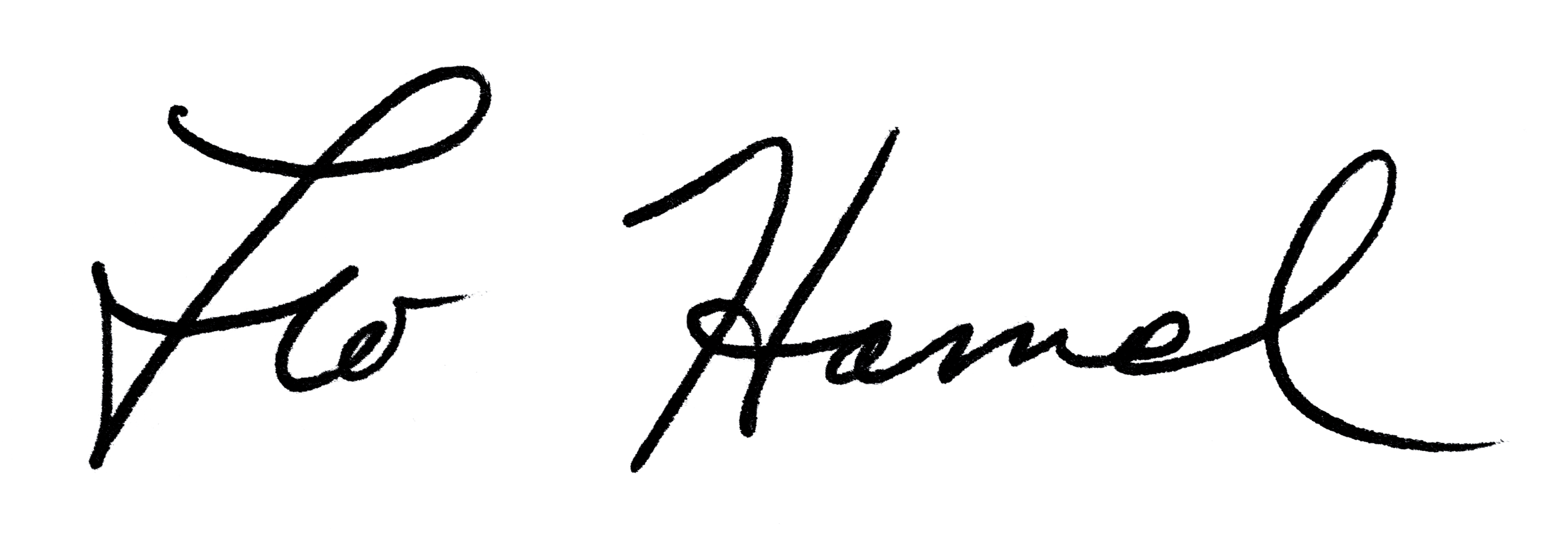
Leo Hamel Fine Jewelers Policy Letter
Contacting Customers by Letter or Email
We have a theory, which has really proven to be fact, and it is this: The size and quality of our mailing list, and the number of real letters/emails and promotional mailings sent to it, determines our income.
Buyers have a weekly contact target to meet, which is a combination of calls, letters, emails, and thank you cards. The purpose of contacts is to give our customers a personal touch that they will not receive anywhere else while strengthening our referral base, and help us to buy items that require follow-up effort.
Customer contact is so important to your own and to our company’s future revenue stream that an Estate Buyer will receive 0.5 incidents in any week during which zero contacts are made.
ASKING PERMISSION
Always ask permission to contact a customer. Due to the sometimes sensitive nature of selling, a client may value discretion over communication. They may want no communication, or to only be contacted at a specific address, email, or phone. This is extremely important! Even friendly, happy customers may not want someone at home knowing they sold to us. We must always respect our customers’ privacy.
Always remember to ask permission and verify contact information. If you forget to ask permission to contact someone, do not contact that person. That includes leaving phone messages. If you do not have express permission to call, do not leave a detailed phone message.
APPROACH
The easiest ways to make contacts are by writing thank-you notes to customers, following up about items that couldn’t be bought at first, following up with people who’d like to see you again or who promised to leave a review. Don’t limit yourself to this list; be creative!
“Doubling up” – An easy way to meet your contact goal faster is to “double up” on a situation. If someone earns a referral bonus card, also send a thank-you note to the person who was referred. If a couple or group comes in, offer to send thank-you notes to anyone in party you speak with, not just the person selling. If someone offers to leave an online review, follow up with calls or emails. You get contact credit for the review and your follow-up attempts.
DEFINITIONS: CONTACT, FORM LETTER/EMAIL, REAL LETTER/EMAIL
CONTACT: To contact a customer means that you communicate with them in some meaningful way. That communication must be personal and relate to them, rather than be some generic PR message.
REAL LETTER, REAL EMAIL, OR REAL PHONE CALL: A real letter, real email, or real phone call is a contact. A message left on voicemail, which is personal to that customer, is a contact.
Any of the above must have a corresponding remark entered in the contact log or notes in the computer in order to be a VALID CONTACT.
FORM LETTER/EMAIL: The same letter or email sent to more than one person which is not personal to that individual. That would also apply to emails and phone messages; if it’s the same message no matter whom you are contacting, it is not a real or valid contact.
REAL LETTER/EMAIL: “Real letters” and “real emails” are letters/emails that contain a communication to a customer that are relevant and personal to that particular customer. Real letters/emails are written by real people to real people with real communication in them and DO generate real responses from customers.
What is NOT A VALID CONTACT: Calling but getting no answer so that you aren’t able to leave a message does not count as a contact. A “form letter/email” that is not a real letter/email is not a valid contact. The same message left on a dozen people’s voicemails is not a real communication. A valid contact must always be personal and relevant to that individual customer.
EMAIL CONTACTS
We are using email more often to contact customers. It’s an excellent form of communication if you have something specific to communicate to that specific customer. It is not a good form of communication to send a form email (the same email over and over again to a lot of different customers).
Today’s email systems can tell if you send an email and the person on the other end doesn’t open it. If you send multiple emails to that person and they aren’t opened, your specific email address can get marked as spam. Once your email address is marked as spam, there is nothing that IT can do to change it. Only long periods of not sending emails that don’t get opened can change it.
Therefore, email should never be used to send form emails to customers; they should be used only for real communication. That way, the customers will open the emails, and your email address won’t get blocked for sending too many unread emails.
If we get blocked and can’t communicate to our customers, our business is severely harmed. It’s a serious matter.
Effective immediately, anyone who is found to have sent a form email to a customer will be placed on a reduced commissions program of 50% commission reduction for a period of 6 months.
